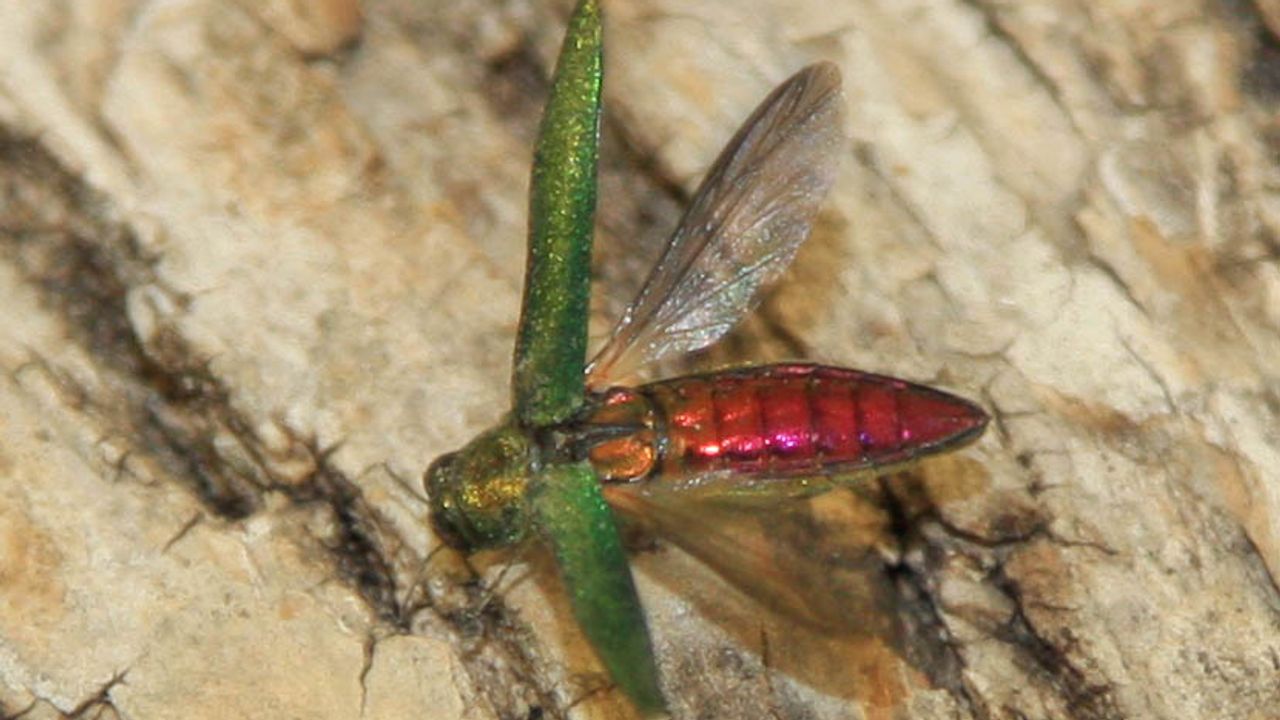EAB spread across Minnesota continues to accelerate
[anvplayer video=”5112159″ station=”998122″]
A growing number of trees in Minnesota are becoming infested with the emerald ash borer, or EAB.
The insect has been detected in 35 counties in the state, including just this week in Kandiyohi County, where an emergency quarantine on wood is now underway.
“Emerald ash borer is a non-native invasive insect that originates from Asia. It was first detected in Minnesota in 2009. It probably arrived here on shipping materials,” said Emily Ball, a city forester in Lakeville. “Emerald ash borer is devastating. In fact, it’s been called one of the most devastating tree pests that the United States has ever dealt with.”
Ball said ash trees in Lakeville are on an exponential death curve due to the pest.
“Last year, we found about 60. This year, we’ve found about 900,” Ball explained. “The larvae tunnel underneath the bark and disrupt the flow of water and nutrients and kill the ash tree. People are losing, in some communities, whole neighborhoods of trees.”

Emerald ash borer (Credit: J. Plunkett/MN Dept. of Agriculture)
The Minnesota Department of Agriculture estimates hundreds of thousands of trees have been impacted so far, statewide.
The agency said EAB spreads when the bugs reproduce and fly short distances but the spread accelerates when people move infested firewood.
“We can see every year the number of infested trees growing by leaps and bounds,” said Jeff Hafner, a consulting arborist at Rainbow Treecare.
Hafner said all homeowners in the metro who have ash trees should be concerned about the spread of EAB.
He recommends injecting ash trees with an insecticide to protect them, which he said can save you a significant amount of money in the long run.
“For $100 a year you can keep a mature tree, providing many benefits, which pales in comparison to the cost of removal, which can be many thousands of dollars depending on where that tree is,” Hafner said.
Ball also voiced urgency when it comes to protecting healthy trees.
“For Lakeville and the south metro, this may be people’s last opportunity to protect their tree with injection because emerald ash borer is accelerating,” Ball said.
Hafner added, “We should really appreciate the mature tree canopy and look to take any action to save it while there’s still time.”
For more information on emerald ash borer, click here.
To see a map of impacted areas in Minnesota, click here.